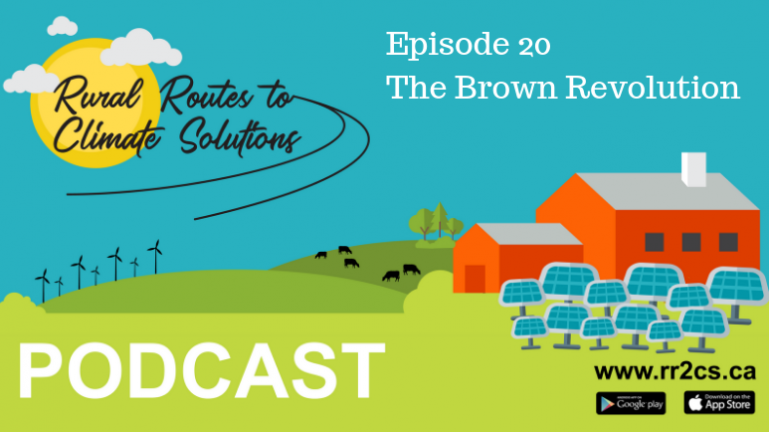Podcast: Play in new window | Download
Subscribe: RSS
Soil is pretty amazing stuff. It can produce food, sequester carbon and provide ecosystem services. Since the introduction of synthetic fertilizers and pesticides, high-yield crops and irrigation in the 1960’s, agriculture has been more preoccupied with what has been happening above the soil than the vast universe of soil organisms in the soil (we also didn’t know a lot about tiny soil microbes back then either). World renowned soil microbiologist, former chief scientist of the Rodale Institute and former USDA scientist, Dr. Kristine Nichols says we, as agricutlural producers, need to put our heads back in the ground and be more concerned with what is happening in the soil than above it. It is time to start treating the soil the same way we treat ourselves.
Listen to Dr. Nichols fascinating and thought provoking presentation at the Breton Community Hall on June 20th, 2019 as she makes a call out for a new revolution in agriculture. Not another Green Revolution, but one that uses something she refers to as eco-functional intensification, which is working with the soil and those soil organisms and their amazing abilities to support many, many different forms of life. You may think you are not a livestock farmer because you produce grain or veggies, but you have millions of microscopic animals in your soil. If you take care of them, they’ll take care of you.
Welcome to the Brown Revolution.
Highlights:
(8:55) The five soil forming factors are: parent material – sandstone, lime – time, topography, climate and biology. Nichols says we may not be able to do much about the first four factors but we can help to energize the biological component, particularly microorganisms. The first four factors without organic matter is dirt, not soil. Soil is organic and created by the relationship between mycorrhizal fungi and the original photosynthesizers (cyano-bacteria).
(14:53) Carbon is money, economics, and drives everything. Carbon provides the building blocks and energy for the reactions you want in your system. Fundamentally all organisms work for food. The goal should be to get more photosynthesis and to get more food production out of the system, therefore maximizing profitability not yields.
(21:23) USA loses 1.6 billion metric tons of topsoil every year. Nichols says we need a new revolution, not a green revolution focused on above-ground yields but a below-ground brown revolution focused on soil. We can do this through eco-functional intensification to use the landscape to its greatest efficiency. It’s not about doing more work, it’s about doing work that will maximize the processing efficiency of organisms in the soil.
(42:00) Dr William Albrecht’s University of Missouri studies in the 1950s found that fertilized corn fields grew 79 bushels of corn compared to 18 bushels in unfertilized fields… but took five times as much water. Nitrogen use efficiency is 50% or less, phosphorus use efficiency is 30% or less and since 1960 our nitrogen use efficiency has gone down rather than up. This is because we have ‘outsourced’ the job of microbiology to synthetic fertilizers. The plant’s solution is to give up water in order to create a diffusion gradient in order to take up the nutrients.
Useful links:
Dr. Kristine Nichols http://www.notill.org/dr-kristine-nichols
Want to learn more about soil biology? Listen to Episode 17 with Dr. Jeff Battigelli of the University of Alberta.


